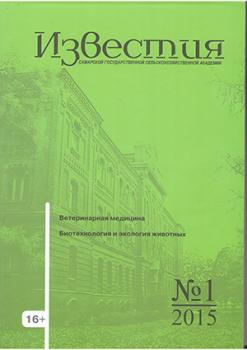Sumy, Ukraine
Sumy, Ukraine
The research purpose was to identify high-quality variety features of formation of yield capacity and quality of soybean seeds when applying seniccation and desiccation in the Left-bank forest-steppe of Ukraine. The research subject is Anna, Romance, Vasilkovskaya varieties of soybean, the elements of technology of cultivation (desiccation and seniccation), yield capacity and quality of seeds. The experiment was carried out according to the two-factor scheme in a 4-times repeat at the Institute of Agriculture of the Northeast of NAAS of Ukraine. The research results showed that the duration of vegetation was influenced both by varietal characteristics and the application of desiccation and seniccation. On average, the smallest period from the growing phase to the full ripeness was stated on the variant with Reglon Super 2.0 l/ga and Basta 2.0 l/ga desiccation (36-37 days). The maximum level of yield capacity on the average in 2007-2009 was obtained from Vasilkovskaya variety – 2.50 t/ga. Annushka variety provided significantly lower yields (2.0 t/ha), as it was proved by the calculated NSR05. In terms of yield capacity Romantika variety took an intermediate position of 2.38 t/ga. On the variants with the application of seniccation and desiccation a positive trend of their influence on the yield capacity of soybean seeds in all studied varieties was stated. So, on average, an increase of yield capacity was stated when applying: seniccation 5.0% solution of ammonium nitrate per 0.38 t/ga; 8.0% solution of urea per 0.45 t/ga; Reglon Super 2.0 l/ga per 0.24 t/ga; Basta 2.0 l/ga 0.3 t/ga as compared to the control. Application of seniccation favored the increase of protein content: urea solution by 0.7%; solution of ammonium nitrate by 0.5% compared to the control. On the variants of desiccation the protein content was at (33.9-34.1%). Oil content of the seed of studied varieties ranged from 20.0 to 24.1%.
soy, desiccation, sanicula, yield, quality
1. Babych, A. Variety resources of the soybean for the Forest-steppe / A. Babych // Agrarian week of Ukraine. - 2012. - №15. - P. 14-15.
2. Balakay, G. T. Soybean: ecology, agricultural machinery, processing / G. T. Balakay, O. S. Bezuglova // Podvorye. - Rostov-na-Donu : Phenix, 2003. - 160 p.
3. Mikheyeyv, V. G. Soy productivity according to the application of growth regulator, desiccation, seniccation, of crops under the conditions of Left-bank Forest-steppe of Ukraine : author. dis. … cand. agricultural science : 06.01.09 / Mikheyeyv Valentin Grigor’evich. - Kiev, 2009. - 20 p.
4. Seren, K. D. Seniccation of soy crops (Glicine hispida Maxim.) in the dry steppe zone of the Repuplic of Tyva / K. D. Seren, L. A. Ignatiev // Agrokhimiya. - 2008. - №2. - P. 50-56.
5. Chernyshenko, P. V. Pre-harvest desiccation - an important element of soy planting technology in plant-growing / P. V. Chernyshenko, S. S. Raybukha, V. O. Shelyakin // Visnyk THZ APV of Kharkiv region. - 2013. - №14. - P. 143-152.
6. Federal Biological Research Centre for Agriculture and Forestry mono- stages of development and dicotyledon plants : BBCH Monograph. - Blackwell Science Publishing Berlin. - Vienna, 1997. - 622 р.
7. Food and agriculture organization of the United Nations. FAO [Electronic resource]. - URL: http://faostat.fao.org/site/636/default.aspx#ancor (date accessed: 2.03.2016).





